- Home
- Clarice Lispector
The Besieged City
The Besieged City Read online
The Besieged City
ALSO BY CLARICE LISPECTOR
Available From New Directions
Água Viva
A Breath of Life
The Chandelier
The Complete Stories
The Foreign Legion
The Hour of the Star
Near to the Wild Heart
The Passion According to G. H.
Selected Crônicas
Soulstorm
Copyright © 1949 by the Heirs of Clarice Lispector
Translation copyright © 2019 by Johnny Lorenz
Introduction copyright ©2019 by Benjamin Moser
Originally published as A cidade sitiada. Published by arrangement with the Heirs of Clarice Lispector and Agencia Literaria Carmen Balcells, Barcelona.
All rights reserved. Except for brief passages quoted in a newspaper, magazine, radio, television, or website review, no part of this book may be reproduced in any form or by any means, electronic or mechanical, including photocopying and recording, or by any information storage and retrieval system, without permission in writing from the Publisher.
First published clothbound by New Directions in 2019
Manufactured in the United States of America
Design by Erik Rieselbach
Library of Congress Cataloging-in-Publication Data
Names: Lispector, Clarice, author. | Lorenz, Johnny, translator. | Moser, Benjamin, editor
Title: The besieged city / by Clarice Lispector ; translated by Johnny Lorenz ; edited by Benjamin Moser.
Other titles: Cidade sitiada. English
Description: New York : New Directions, 2019. | Originally published as A Cidade Sitiada in 1949.
Identifiers: LCCN 2018046582 (print) | LCCN 2018059175 (ebook) | isbn 9780811226721 (ebook) | isbn 9780811226714 (alk. paper)
Classification: lcc pq9697.l585 (ebook) | lcc pq9697.l585 c513 2019 (print) | ddc 869.3/42—dc23
LC record available at https://lccn.loc.gov/2017051736
eISBN: 9780811226721
New Directions Books are published for James Laughlin
by New Directions Publishing Corporation
80 Eighth Avenue, New York 10011
Contents
Obyezloshadenie by Benjamin Moser
THE BESIEGED CITY
1 The Hill in the Pasture
2 The Citizen
3 The Hunt
4 The Public Statue
5 In the Garden
6 Sketch of the City
7 The Alliance with the Outsider
8 The Betrayal
9 The Exposed Treasure
10 The Corn in the Field
11 The First Deserters
12 End of the Construction: The Viaduct
Appendix: A Response to a Response
Acknowledgments
Landmarks
Cover
Obyezloshadenie
In 1920, at the time of Chaya Pinkhasovna Lispector’s birth in a Ukrainian village, Isaac Babel — born just down the road a generation earlier — was traveling with the Bolshevik army. He was chronicling the horrors of the war, including the anti-Semitic pogroms that caused Chaya’s family to flee. As he followed the cavalry, he was also chronicling the travails of the animal that, for millennia, had accompanied every aspect of human work and warfare. Now, that indispensable creature was gradually being replaced by motors. Babel named the process obyezloshadenie.
Twenty-five years later, “dehorsification” would provide the most poignant metaphor in a book Chaya — by then a Brazilian named Clarice — was writing. The Besieged City tells of a girl’s transformation into a woman, and a township’s transformation into a city. The settlement’s “civilization” makes its formerly humble denizens slick and chatty; and as São Geraldo expands, words, possessions, and marriage progressively de-horse Lucrécia. She is grateful to be domesticated — but the animals retreat, and The Besieged City ends with their surrender: “the last horses had already emigrated, surrendering the metropolis to the glory of its mechanism.”
*
In 1971, Clarice Lispector told an interviewer to read The Besieged City — “if you manage,” she shrugged. “Even I thought it was hard.” Elsewhere she referred to her third novel as “one of my least liked books,” and professed her own bafflement with the story of the girl from São Geraldo.
Every educated Brazilian knows G. H. and Macabéa. But only the devoted clariceano will quickly recognize the name of Lucrécia Neves Correia. In a country groaning beneath the weight of writings on Clarice Lispector, the book of which Lucrécia is the protagonist is an orphan. Essays and articles about it, in Brazil, are rare, and it seems to be little-read. Sales indicate that it is the least popular of her novels.
The book nearly killed her career. She became famous with her first novel, Near to the Wild Heart, published when she was twenty-three. Her second, The Chandelier, published three years later, in 1946, was less successful, although — more likely because — it is even more ambitious than her first. She finished The Chandelier in Naples, where she was accompanying her husband, the young Brazilian diplomat Maury Gurgel Valente. They arrived with the war raging — Clarice nursed wounded Brazilian soldiers; Maury helped reestablish the foreign service — but this dramatic start to their overseas careers ended with the Allied victory. In 1946, they were posted to Bern, the capital of a country untouched by the war. The contrast with Naples was glaring.
“The city lacks a demon,” she wrote a friend.
Boredom and exile sharpened the depression she already suffered before her marriage, and which her wartime activities kept at bay. Now, all she had to do was go to the movies, take sculpture class, and learn how to knit — though she drew the line at playing cards.
“This Switzerland,” she wrote her sister, “is a cemetery of sensations.”
She hated being away from her friends, her family, and her country. “It’s bad to be away from the land where you grew up,” she told another friend. “It’s horrible to hear foreign languages all around you, everything seems rootless.”
For all that, Bern had two saving graces, gestating simultaneously: her first child, and The Besieged City. “My gratitude to that book is enormous: the effort of writing it kept me busy, saved me from the appalling silence of Bern, and when I finished the last chapter I went to the hospital to give birth to the boy.”
The book was rejected by the publisher of The Chandelier. She asked her sister to help, warning her not to read it. “It is so tiresome, really. And you might suffer by having to tell me that you don’t like it and feel bad about seeing me literally lost.”
More rejections followed. When, at last, a publisher accepted it, reviewers who had expressed excitement about her previous work scratched their heads.
“It’s a dense, closed book,” she wrote. “I was chasing after something and there was nobody to tell me what it was.”
Few tried.
“Its hermeticism has the texture of the hermeticism of dreams,” a critic said. “May someone find the key.”
*
In the early part of this century, I began amassing materials for my biography of Clarice Lispector. “The early part of this century” was less than two decades ago. But technological changes created such a gulf between then and now that the phrase seems warranted: it was, for example, just before the digital camera made it possible to photograph as much as one wanted of virtually anything; and I can still see myself sitting in the archive, pencil in hand, copying out letters
, word by arduous word.
“The early part of this century” was also just before most booksellers went online. It was unthinkable, when I set out, to have millions of books available with a click. Since I neither lived in Brazil nor in a place with an outstanding Brazilian research collection, I did not see any alternative but to build a library of my own. Finding books was a great labor. I vainly chased citations — even hints of citations — up and down the country. On my visits, there was never enough time to find them all.
I feel no nostalgia for note-taking. But I’ve never given up prowling for books. I earned a knowledge of the Brazilian bibliography impossible to acquire without those thousands of apparently fruitless hours. And every researcher knows that finding something you’re not looking for is very often more exciting than finding something you are. Precisely because the internet makes it easy to find what you’re looking for, it can make it harder to find the things you’re not.
When they became available, the databases confirmed my intuition that certain books — cheap and popular in appearance — are, in fact, surpassingly rare. A paperback novel published in 1964 might cost pennies when you find it; but precisely because it was cheap and popular nobody cherished it, and almost every copy got put out with the trash.
I still collect Brazilian books because objects need curators, explicators. Every bibliophile has seen the mysterious way in which books magnify books, and fragments communicate with fragments. Books, like people, exist most happily in society.
*
Several years ago, I came across a first edition of The Besieged City. Printed on brittle, acidic paper, not widely read or reviewed at the time of publication, this book has nonetheless survived in many copies, making it the most common early edition of Clarice Lispector. I had one. I would probably not have bought another — except for a single-page insert that I had never seen, and have never encountered since.
It reads:
The following changes are explained by the impossibility of the author, then residing in Switzerland, to be present for the typesetting of the book. Returning to the country when the book was already printed, and recognizing as indispensible the need to correct certain details, they follow below.
The fifteen amendments include single-letter typos — “com” (with) versus “como” (how); “sonhava com liberdade como uma guerra” (she was dreaming freely like a war) versus “sonhava com liberdade como numa guerra” (she was dreaming freely as in a war) — that would escape even an attentive eye, particularly one accustomed to this writer’s arabesques. The revisions change nothing for the reader. But they were important enough for the writer to go to the trouble to have the page printed, and included in the book.
The commercial value of this leaf is zero. The prose it contains, the paragraph above, is bureaucratic — even, with that dangling participle, ungrammatical. Yet it becomes intriguing when seen alongside another discovery I made when I had already edited a full draft of this translation. When arranging some books on my shelves, I happened upon a sorry-looking second edition. It had turned up at auction a decade ago, signed by Clarice Lispector. Such signed copies are rare, but this one was in bad shape — a paperback, stripped of its cover; a second edition, not a first — and not dedicated to anyone famous (“Rosa”). It was not expensive.
Now, I noticed a word, “revista,” revised, that I had not noticed before, and had never spotted on any other edition of Clarice’s works. Because I was already deep into this work, I decided to see what she had revised. Editing these books means taking them through several drafts, an unbearably tedious process that also happens to be indispensible. If I had not happened to be in the middle of that sculpting already, I would never have voluntarily put a second edition under this microscopic lens.
Yet as I did, I found modifications on every page: hundreds in all. I tried to find another copy to send to the translator. Online, there was nothing. But as I worked through the draft, I saw that to consider this second edition alongside the first and the errata was to see something extraordinary. The three documents, taken together, showed nothing less than a manuscript of Clarice Lispector’s writing in process.
*
Such a manuscript has long been a scholarly grail. With the exception of Água Viva, which exists in two versions, and some works left unfinished at her death, her drafts do not exist. They must have, at some point: she claimed to have rewritten The Apple in the Dark eleven times. But none of these versions have survived. In any case, she claimed never to revise or reread published work. “When I reread what I’ve written,” she said to a friend, “I feel like I’m swallowing my own vomit.”
As she came into maturity, her writing came to recall poetry as Wordsworth defined it, “the spontaneous overflow of powerful feelings.” The appearance of spontaneous overflow was a hallmark of her style. Like Frans Hals or Vincent van Gogh, she seemed to be an action painter; she wrote, rumor would later have it, in a trance. But to see these revisions is to discover — as when viewing a painting with x-rays — that beneath the furious surface lurks a deliberate and painstaking architecture.
To see these several stages is to see how much, and for how long, The Besieged City obsessed her. She began it in 1946; the second edition dates to 1964. This means that, in some form or another, she was working on this book for eighteen years. Even when she was still in Bern, her protracted rewriting shocked her housekeeper. It was better to be a cook than a writer, the woman told her employer — since “if you put too much salt in the food, there’s nothing you can do about it.”
Clarice wrote her sister:
I’m struggling with the book, which is horrible. How did I find the courage to publish the other two? I don’t know how to forgive the thoughtlessness of writing. But I’ve already based myself entirely on writing and if that desire goes, there won’t be anything left. So that’s the way it has to be. But I’ve reached the conclusion that writing is what I want more than anything else in the world, even more than love.
Her letters from Switzerland show she was severely depressed; it may not be too much to say that, with this book, her life was on the line. Was that why it was so hard to let go? When she did, she was embarrassed that she clung to it so ardently. The claim on the errata that she had not overseen its publication is untrue, for example: she was in Rio for several months before the book came out, and never returned to Switzerland.
In the second edition, she cleans up some grammar: the last sentence of Chapter 4, in the first edition, could refer either to Lucrécia or to the living room; the second edition resolves this. She changes pronouns to names — “Lucrécia” instead of “she” — or replaces the neutral pronoun with something explicit: “An instant when one would express oneself” becomes “An instant when she’d express herself.” She minimizes the passive voice: “resistance itself would have been broken so often before” becomes “she’d have so often before broken resistance itself.”
This is tidying: copyediting. Elsewhere, she inserts the word “já” (now, already), a quickening additional syllable. She adds: beginning Chapter 5 with “A bit later,” for example. She explains: “she rubbed the railing with her sleeve” becomes “she rubbed the railing of the Library with her sleeve.” In the same chapter, she eliminates “like telegram signals.” And in Chapter 7, she even strikes a sentence — “The mornings were humid in São Geraldo” — that she had inserted in the errata.
*
The most significant changes have the effect of cracking a window, opening a door. Throughout, she breaks up the long black blocs of the first edition, splitting paragraphs into five, six, and even seven separate sections. This extra white space allows the reader to move down the page with far greater ease.
Stranger is the punctuation. Breaking rhythms, adding pauses, shifting emphases, hundreds of commas are sprinkled throughout, changing the music of her prose, clarifying difficult passages — and then, jus
t as often, muddying them further, weird little hairs in the soup. She changes some passages. Others, exactly comparable, she stets.
Yet there is nothing offhand about her punctuation. “My punctuation is my breath,” she said. In the 1950s, she haughtily ordered the French publisher of Near to the Wild Heart to lay off her commas: “You will agree that the elementary principles of punctuation are taught in every school.” At the end of the 1960s, when she began writing for the Rio newspaper Jornal do Brasil, she impressed upon her editor, over and over again, that the young woman was not to disturb “so much as a comma.”
The theme crops up constantly. This insistence, and the attention she paid to The Besieged City over nearly two decades, makes the changes she chose not to make as noteworthy as those she did. The longer one studies them, the more cryptic they come to seem. One can only conclude that this mystery was at least partially the point. In November 1958, an editor wrote to invite her to contribute to a new magazine: “We would like to read your stories which we never considered intelligible.”
The appeal was well-phrased. She sent the stories.
*
One challenge of translating The Besieged City is its range of “vision words”: divisar, encarar, enxergar, espiar, fitar, observar, olhar, parecer, perceber, pressentir, prever, rever, sentir, ver, vigiar. With all their aspects, in all the idioms they populate, embroidered by Clarice Lispector’s poetic usages, they describe nuances of seeing. Sometimes Lucrécia looks or sees instead of saying or thinking: “This city is mine, the woman looked.” Sometimes these words are used in ways that are hard to understand.
Yet if the language can be inscrutable, there is nothing unintelligible about Lucrécia Neves. Unlike the protagonists of Clarice’s first two novels, Lucrécia is vain and pretentious, content to remain on the surface. Lucrécia — there it is in her name — is lucre, just another one of the porcelain knickknacks in her mother’s sitting room: “Behold, behold, all of her, terribly physical, one of the objects.” Her ambitions are material, and she is the most insolently superficial woman Clarice ever portrayed.

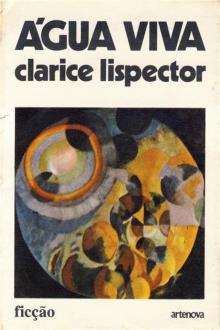 The Stream of Life
The Stream of Life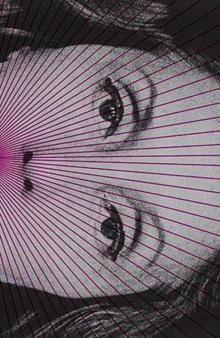 The Complete Stories
The Complete Stories The Hour of the Star
The Hour of the Star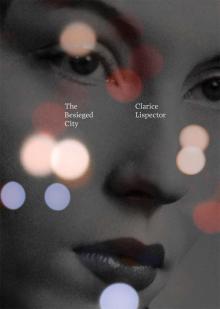 The Besieged City
The Besieged City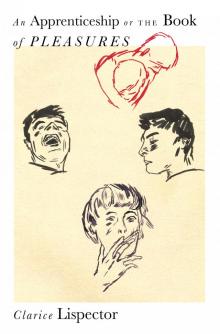 An Apprenticeship or the Book of Pleasures
An Apprenticeship or the Book of Pleasures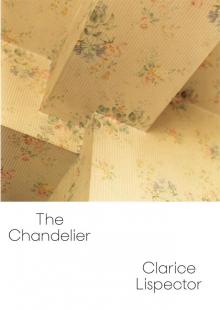 The Chandelier
The Chandelier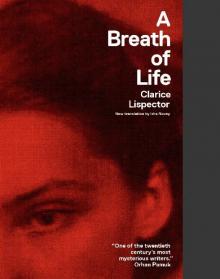 A Breath of Life
A Breath of Life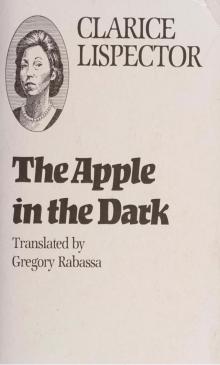 The Apple in the Dark
The Apple in the Dark Agua Viva
Agua Viva Complete Stories
Complete Stories Near to the Wild Heart
Near to the Wild Heart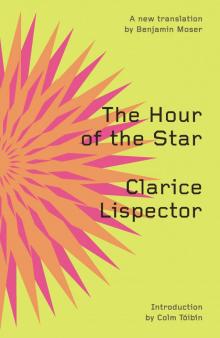 The Hour of the Star ()
The Hour of the Star ()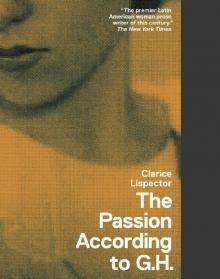 The Passion According to G.H.
The Passion According to G.H.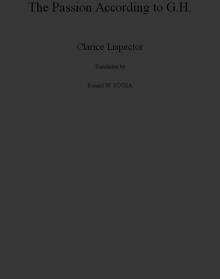 The Passion According to GH
The Passion According to GH